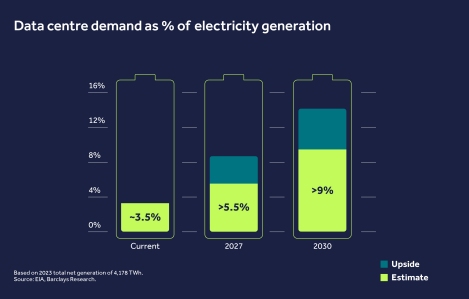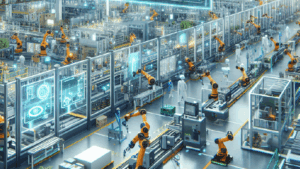In today’s hyper-connected world, the digital landscape of any organization—or even a modern home—is a complex, sprawling ecosystem. It’s a heterogeneous mix of servers, network switches, IoT sensors, mobile devices, and specialized hardware, often from dozens of different vendors. For decades, managing this complexity has been a reactive game of “whack-a-mole.” IT teams stare at dashboards, waiting for a metric to cross a predefined threshold, triggering a flood of alerts that often obscure the root cause of a problem. This paradigm is no longer sustainable. The sheer volume and velocity of data generated by these devices have overwhelmed human capacity for analysis. Enter the next evolution in operational intelligence: AI-powered monitoring. This transformative technology is shifting the focus from reactive problem-solving to proactive, predictive, and even automated network and device management. It’s the silent intelligence that promises to tame the chaos, ensuring seamless performance and user experience across an increasingly diverse and distributed technological world.
The Evolution from Reactive to Predictive: A New Era in Device Monitoring
The journey of device and network monitoring is a story of increasing intelligence and automation. What began as simple “ping” tests to check if a device was online has evolved into a sophisticated discipline where artificial intelligence is not just an advantage but a necessity. Understanding this evolution is key to appreciating the profound impact of modern AI monitoring platforms.
Traditional Monitoring: The Limitations of Thresholds and Alerts
For years, the gold standard in monitoring relied on static, rule-based systems. Administrators would configure thresholds for key performance indicators (KPIs) like CPU utilization, memory usage, or network latency. For example, a rule might be set to trigger an alert if a server’s CPU usage exceeds 90% for more than five minutes. While functional, this approach has several critical flaws:
- Alert Fatigue: In large environments, this system generates a constant stream of alerts, many of which are benign or redundant. IT teams become desensitized, making it easy to miss critical warnings amidst the noise.
- Lack of Context: A 90% CPU spike might be normal during a scheduled backup but a critical issue at any other time. Threshold-based systems lack the context to differentiate, treating all events equally.
- Reactive Nature: These systems only report a problem after it has already occurred. By the time an alert is triggered, the user experience may have already been degraded, or a service may have failed.
- Manual Root Cause Analysis: An alert simply flags a symptom. The arduous task of digging through logs, correlating events across different systems, and identifying the actual root cause falls entirely on human engineers, a process that can take hours or even days.
The AI Infusion: AIOps and Predictive Analytics
AIOps (AI for IT Operations) represents a fundamental paradigm shift. Instead of relying on rigid, predefined rules, AIOps platforms ingest vast amounts of telemetry data—logs, metrics, traces—from every corner of the IT environment and apply machine learning algorithms to uncover insights. This is a core topic in the latest AI Monitoring Devices News. The key capabilities that AI brings to the table include:
- Dynamic Anomaly Detection: AI models learn the normal operating baseline for every device and application, even as it changes over time. They can then identify subtle deviations from this baseline that would never trigger a static threshold but are often early indicators of an impending issue. This is crucial for managing data from the ever-growing world of AI Sensors & IoT News.
- Predictive Failure Analysis: By analyzing historical data and subtle performance degradation patterns, AI can predict future failures. For example, it might forecast that a storage array will run out of capacity in two weeks or that a specific network switch has a 75% probability of failing in the next 72 hours, allowing teams to take preventative action.
- Automated Root Cause Analysis: When an issue does occur, AI can instantly correlate events across thousands of data points. It can determine that a slow application response time is not due to the application server itself, but rather a cascading effect from a failing network card in a completely different part of the data center, reducing diagnostic time from hours to seconds.
- End-User Experience Monitoring: The ultimate goal is not just to keep devices online but to ensure a good user experience. Modern AI platforms can synthesize data from AI Phone & Mobile Devices News and user applications to understand performance from the user’s perspective, identifying issues like slow page loads or application crashes before users even file a complaint.
Under the Hood: The Technology Stack of Modern AI Monitoring
The power of an AI monitoring platform lies in its sophisticated, multi-layered technology stack. It’s a complex pipeline designed to transform raw, chaotic data into actionable, intelligent insights. This process can be broken down into three fundamental stages: data ingestion, AI-driven analysis, and automated action.
Data Ingestion and Aggregation in a Vendor-Agnostic World

The foundation of any AIOps platform is its ability to collect data from everything, everywhere. This is a significant challenge in modern environments that include on-premise data centers, multiple public clouds, and a plethora of AI Edge Devices News. A robust platform must be vendor-agnostic, capable of ingesting telemetry from:
- Network Hardware: Routers, switches, and firewalls from various manufacturers.
- Servers and Virtual Machines: Both physical and virtualized servers, regardless of the operating system.
- IoT and Smart Devices: This includes everything from industrial sensors discussed in Robotics News to devices featured in Smart Home AI News and AI-enabled Cameras & Vision News.
- Applications and Services: Performance metrics and logs from the software layer itself.
This data is then normalized and aggregated into a unified format, creating a single source of truth for the entire technology ecosystem. This comprehensive data lake is the fuel for the AI engine.
The AI Core: Machine Learning Models at Work
At the heart of the platform are the machine learning models that analyze the aggregated data. Different types of algorithms are employed for specific tasks:
- Time-Series Forecasting: Models like ARIMA (Autoregressive Integrated Moving Average) or more advanced LSTMs (Long Short-Term Memory networks) are used to predict future values of metrics like bandwidth usage or transaction volume, enabling proactive capacity planning.
- Clustering and Anomaly Detection: Unsupervised learning algorithms like Isolation Forests or DBSCAN group similar behaviors together to establish a baseline of “normal.” Any data point that doesn’t fit into a known cluster is flagged as a potential anomaly for further investigation.
- Natural Language Processing (NLP): NLP models, similar to those discussed in AI Assistants News, are used to parse and understand unstructured data, such as system logs or user-generated support tickets. This can reveal patterns and identify issues that metric-based analysis would miss.
Automated Remediation and Orchestration
The final, and perhaps most transformative, stage is action. Identifying a problem is only half the battle. Modern platforms integrate with orchestration tools to trigger automated workflows for remediation. For example, upon detecting a predictable service failure, the system could automatically:
- Provision a new virtual machine.
- Deploy the application from a healthy backup.
- Reroute network traffic to the new instance.
- Decommission the failing VM for later analysis.
This self-healing capability minimizes downtime and frees up human engineers to focus on higher-value tasks, like architectural improvements and innovation, effectively becoming powerful AI Tools for Creators of resilient IT systems.
The Ripple Effect: Real-World Applications and Industry Impact
The shift towards AI-powered monitoring is not confined to corporate IT departments. Its impact is being felt across a vast array of industries, creating smarter, more efficient, and more reliable systems. The ability to maintain a unified view over disparate devices is a game-changer everywhere.
Smart Cities and Critical Infrastructure
Municipalities are leveraging AI monitoring to build truly smart cities. Imagine a central platform that ingests data from traffic cameras, public Wi-Fi access points, environmental sensors, and the power grid. As covered in Smart City / Infrastructure AI Gadgets News, this allows for real-time optimization. The system could predict traffic congestion based on public event schedules and automatically adjust traffic light patterns to smooth the flow. It could also monitor energy consumption patterns, a key topic in AI for Energy / Utilities Gadgets News, to detect grid anomalies and prevent blackouts.

Healthcare and Manufacturing (Industry 4.0)
In healthcare, reliability is a matter of life and death. Hospitals are using AI to monitor thousands of connected medical devices, from infusion pumps to MRI machines. This falls under the umbrella of Health & BioAI Gadgets News. The platform can predict when a device needs maintenance *before* it fails during a critical procedure, ensuring patient safety and equipment uptime. In manufacturing, AI monitors industrial robots and assembly line sensors. It can predict mechanical failures, optimize maintenance schedules to avoid costly production stoppages, and ensure quality control by analyzing data from AI Cameras News feeds.
Consumer Ecosystems and Proactive Support
This technology is also enhancing the consumer experience. Internet Service Providers (ISPs) can now proactively monitor the health of a customer’s entire home network. By analyzing performance data from routers, Wi-Fi extenders, and connected devices—from Smart Appliances News and Robotics Vacuum News to AI Audio / Speakers News—they can identify and resolve issues like poor Wi-Fi signal or device conflicts before the customer even notices a problem. This proactive support model drastically improves customer satisfaction and reduces support call volume. This same principle applies to the growing market for AI Pet Tech News, where companies can ensure their connected feeders and trackers are always performing optimally.
Navigating Implementation: Best Practices and Future Trends
Adopting an AI-powered monitoring solution is a significant undertaking that requires careful planning. As the technology matures, its applications will only become more ambitious and widespread, extending into everything from AI in Sports Gadgets News to Autonomous Vehicles News.

Best Practices for Adoption
To ensure a successful implementation, organizations should follow several key best practices:
- Start with a Defined Scope: Don’t try to monitor everything at once. Begin with a specific, high-impact use case, such as monitoring the performance of a critical customer-facing application. Prove the value and then expand from there.
- Prioritize Data Quality: The adage “garbage in, garbage out” is especially true for AI. Ensure that the telemetry data being fed into the system is clean, accurate, and comprehensive. This includes data from all relevant sources, including newer categories like AI for Accessibility Devices News.
- Integrate with Existing Workflows: An AIOps platform should not be an isolated silo. Choose a solution that integrates seamlessly with your existing IT Service Management (ITSM) platforms, communication tools (like Slack or Teams), and orchestration engines.
- Foster a Human-in-the-Loop Culture: The goal is not to replace human experts but to augment them. Use the AI to handle the data-heavy analysis and automate repetitive tasks, freeing up your skilled engineers to focus on strategic problem-solving and innovation.
The Future is Autonomous and Ubiquitous
The trajectory of AI monitoring is clear: towards greater autonomy and broader application. We are moving towards the concept of self-healing, self-optimizing networks that can anticipate needs and resolve issues with minimal human intervention. The scope of monitoring will continue to expand into niche but important areas. Imagine platforms monitoring fleets of agricultural drones and sensors, a key development in AI Gardening / Farming Gadgets News, or ensuring the reliability of Neural Interfaces News prototypes in research labs. The rise of powerful AI Edge Devices News will enable more analysis to happen locally, reducing latency and enabling real-time responses in applications like autonomous vehicles and personal robotics. This intelligent oversight will become the invisible, essential foundation for nearly every piece of technology we use.
Conclusion
The era of reactive, threshold-based monitoring is drawing to a close. The complexity and scale of modern technology ecosystems demand a more intelligent, proactive, and automated approach. AI-powered monitoring platforms represent this necessary evolution, transforming operations from a constant fire-drill into a strategic, data-driven discipline. By leveraging machine learning to detect anomalies, predict failures, and automate remediation, these systems deliver unprecedented levels of reliability, performance, and efficiency. This is more than just an incremental improvement; it is a foundational shift that enables organizations to manage the chaos of a hyper-connected world. As this technology becomes the standard, it will be the silent, intelligent force ensuring that our digital infrastructure—from the data center to our smart homes—runs seamlessly, securely, and efficiently.










